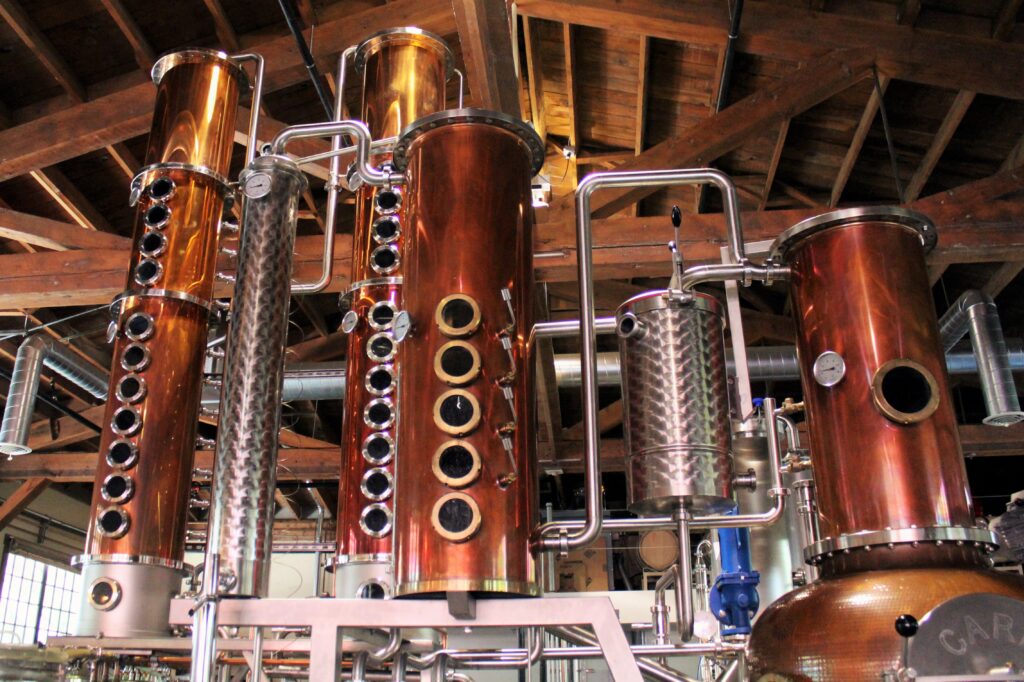
By: Brian D. Kaider, Esq., KaiderLaw
There are many reasons why beer might be transferred from one brewery to another. Some common examples include; beer transferred between two locations of the same brewer, beer contract brewed by one brewery for another, and beer to be blended as part of a collaboration. How these transfers are handled and, more importantly, how taxes are applied varies according to the circumstances.
Breweries of Common Ownership
Since at least 1954, federal law has allowed the transfer of beer, without payment of tax (i.e., “in bond”) between breweries of common ownership. Title 26 of the U.S. Code §5414, as written in 1954 simply stated “[b]eer may be removed from one brewery to another brewery belonging to the same brewer, without payment of tax, and may be mingled with the beer of the second brewery, subject to such conditions, including payment of tax, and in such containers, as the Secretary or his delegate by regulations shall prescribe.”
Some terminology here may be helpful. When the President signs a law passed by Congress, the provisions of the law are broken up into subjects and listed in the U.S. Code (U.S.C.). For example, laws relating to federal taxes are listed in Title 26 of the U.S.C. (the “Internal Revenue Code”) and those taxes that apply to alcoholic products are listed in Title 26, Subtitle E, Chapter 51. But, it is up to the applicable government agency in charge of enforcing the law to determine how to put the law into practice. So, it creates “implementing regulations” that are categorized and listed in the Code of Federal Regulations (“C.F.R.”). In this case, C.F.R. Title 27, Chapter I, Subchapter A, Part 25, Subpart L, sections 25.181-186 were created by the TTB to deal with the transfer of beer to another brewery of the same ownership.
In 1958, Congress amended 26 U.S.C. §5414 to further allow transfer in bond between breweries owned by different corporations, if either (A) one corporation owns a controlling interest in the other, or (B) the controlling interest in both corporations is owned by the same “person,” which may be a third corporate entity. Breweries in one of these arrangements are said to be in a “controlled group.” As most small breweries are aware, in 2017, the Craft Beer Modernization Act (“CBMA”) provided for a reduced tax rate of $3.50 per barrel on the first 60,000 barrels per year, a level the vast majority of U.S. breweries will never exceed. This reduced tax rate applies to the first 60,000 barrels of beer removed for consumption by members of a controlled group, collectively. So, if there are two members of the controlled group, each of which produces 35,000 barrels of beer that are removed for consumption in a given year, the last 10,000 of those barrels will be subjected to the higher tax rate of $16.00 per barrel.
Contract Brewing
Until 2017, beer could only be transferred in bond between breweries under common ownership or control, as described above. The CBMA, however, added section (a)(3) to 26 U.S.C. §5414, which authorizes the transfer in bond between breweries of different ownership, provided that the transferor divests itself of all interest in the transferred beer and the transferee accepts responsibility for the payment of tax. Thus, a brewery that contract brews a beer for another brewery can transfer that beer in bond to the contracting brewery. The tax that will apply to that beer when removed for consumption, however, is not so clear-cut.
The reduced tax rate of $3.50 per barrel applies only to beer produced by the brewery paying the tax. So, if Brewery A pays Brewery B to manufacture “Hypothetic Ale,” and Brewery B brews the beer, bottles it, labels it, and sends it back to Brewery A, in bond, when Brewery A removes that beer for consumption, it will have to pay the full $18.00/barrel tax rate. The question, then, is what activity by the receiving brewery counts as “production?”
When Congress first passed the CBMA, it was initially set to expire after two years. So, rather than go through the lengthy process to issue implementing regulations for this temporary law, the TTB instead issued Procedure 2018-1, which explained how it would address the changes in the law. In 2020, Congress passed the Taxpayer Certainty and Disaster Tax Relief Act, which among other things made the CBMA changes permanent. As it works through the process of drafting and approving implementing regulations, TTB on July 13, 2023 issued Procedure 2023-1, which contains the guidance of 2018-1 with some minor updates.
According to Procedure 2023-1, a brewery receiving beer in bulk that only carbonates the beer or transfers it into consumer packaging is only making de minimus changes to the beer and is not eligible for the reduced tax rate. A beer is considered to be “produced” if it is brewed by fermentation or “produced by the addition of water or other liquids during any stage of production.” Thus, if a brewery receives bulk beer concentrate and adds water to it before packaging, they will be considered the producing brewery and will be eligible for the $3.50 tax rate.
The TTB guidance does not indicate how much water must be added in order to be considered production. Here, reasonableness should be the guiding principle. Receiving a ten barrel batch of bulk beer and adding a gallon of water would certainly not be viewed as “producing” the beer. If, on the other hand, the transferred beer is sufficiently concentrated to enable it to be shipped in one container instead of two, adding an equal amount of water upon receipt would likely be viewed as production. If in doubt, contacting the TTB or a knowledgeable attorney in advance to get guidance on a specific situation is a good approach.
Blending/Collaboration
Collaboration beers are becoming more common and can be a great way for new breweries to gain market recognition by collaborating with a more established brewery. In some cases, the two breweries design a recipe together and then one brewery does all of the actual production. In other cases, each brewery may produce a beer and then the two beers are blended together into a single product.
According to Procedure 2023-1, however, the TTB does not consider “blending” to be production for the purpose of taking the lower tax rate. That does not mean, however, that the entire blended product is subject to the higher tax rate. Rather, if a brewery blends a beer of its own production with a beer produced by another brewery not of the same ownership (or control group), it may take the $3.50/barrel tax rate on the portion of beer it produced, but must pay the $18.00 rate on the portion produced by the other brewery. Of course, if the other brewery’s beer is delivered as a concentrate to which water is added in addition to the blending, then the beer would be considered to be produced by the receiving brewery and the lower tax rate would apply to the entire batch.
Records
Whether breweries are commonly owned, part of a controlled group, or completely independent, when transferring beer in bond, proper records must be maintained by both the sender and the recipient.
The shipping brewer should prepare an invoice that includes: a statement that the beer is transferred in bond, the name and address of the shipping brewer, the date of shipment, name and address of receiving brewer, the number and size of cases and/or kegs and total barrels or the size and type of bulk container and total barrels. The original invoice should be sent to the receiving brewer with a copy kept by the shipping brewer.
Beer may be reconsigned to another brewery or returned to the shipping brewery while in transit. In such cases, either a new invoice should be created and all copies of the original voided or the original invoice can be marked with “Reconsigned to:” followed by the name and address of the brewery to which the beer is reconsigned. When the shipment is received, the receiving brewery must verify the information on the invoice, note any discrepancies, and maintain the invoice in the brewery records. The brewery to which the beer is reconsigned or returned is responsible for tax on any beer lost in transit. However, if the loss is not greater than two percent of the quantity shipped, the receiving brewer is not required to file a report of loss or a claim for allowance of the loss if there are no circumstances indicating that any portion of the beer lost was stolen or otherwise diverted to an unlawful purpose.
The information on the invoice, including any discrepancies, should be used by both the shipper and receiver in their Brewery Report of Operations (TTB F 5130.9) or Quarterly Brewery Report of Operations (TTB F 5130.26). Whether the entities are commonly owned, part of a control group, or separate entities, the shipper notes the beer transferred in bond on line 19 of F 5130.9 or line 11 of 5130.26. The receiving brewer notes the received beer on line 5 of 5130.9 or line 3 of F 5130.26. When the receiving brewery removes the beer for consumption, it should be reported on line 14 of 5130.9 or line 10 of 5130.26.
Conclusion
Any brewery that is contemplating transferring beer to another brewery, regardless of ownership, would be well-advised to thoroughly review TTB Procedure 2023-1. Further, these issues should be considered when expanding to a second location or entering into a contract brewing or collaboration arrangement. Creating the appropriate corporate structure for common ownership or a controlled group for the expanded business may prevent application of a higher tax rate. Similarly, ensuring that both parties to a collaboration do enough work on the finished product to be considered a “producer” for the resulting beer may prevent a portion of the product from being assessed at the full tax rate. As always, consultation with an experienced attorney on these issues is a best practice.
Brian Kaider is the principal of KaiderLaw, a law firm with extensive experience in the craft beverage industry. He has represented clients from the smallest of start-up breweries to Fortune 500 corporations in the navigation of licensing and regulatory requirements, drafting and negotiating contracts, prosecuting trademark and patent applications, and complex commercial litigation.









